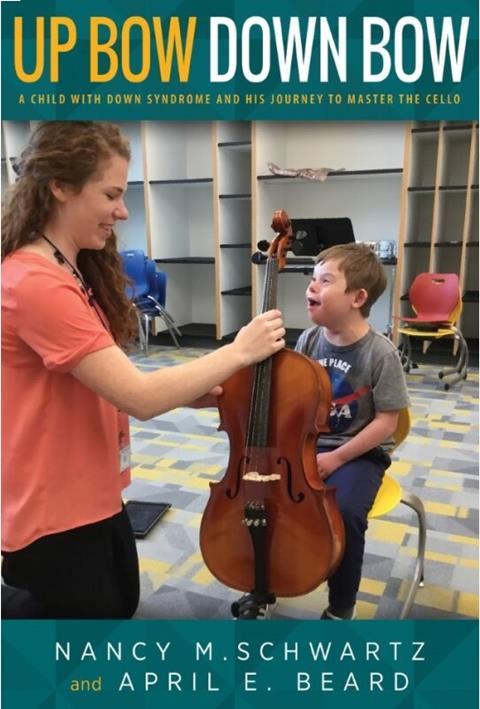Jacqueline Vanasse reads an account of teaching a child with Down’s syndrome written by his mother and principal cello teacher

Up Bow, Down Bow: A Child with Down Syndrome and His Journey to Master the Cello
Nancy M. Schwartz, April E. Beard
132PP ISBN 9781615997046
Modern History Press £32.99
Up Bow, Down Bow tells the story of Alex, a boy with Down’s syndrome, and his quest to learn how to play the cello. Over the course of the book we are introduced to the teaching approaches of Alex’s mother Nancy, and April, the music educator at his school. As they spend time with Alex they are confronted with obstacles that push them to ‘relearn’ how they teach and assist the boy. It is a story about resilience, the power of love – how the player and instrument are friends – and perpetual open-mindedness. Most of all it is about the rewards of focusing on what someone can do, and not on what they can’t. The authors are not afraid to go against tradition if it’s best for their students and for them as teachers.
The two authors take turns in writing the chapters – which appear to be independent of each other, meaning that what Nancy writes in one chapter may not be related to what April writes in the next, or indeed the last. The two women tell their stories individually but I found that the way the narratives are intertwined adds a lot of freshness to the experience. That freshness, together with the overall cheerleading tone of the book, put the reader in a truly happy mood.
Read: Opinion: To speak plainly
Read: ‘When I am in tune, my body knows it’: playing with multisensory aphantasia
The book is full of good teaching advice and life lessons that can apply not only when teaching people with Down’s syndrome but to anyone in general, and that can only inspire better teaching and happier learning. Reading through the pages stimulates one’s reflections on teaching ‘off the beaten track’, as well as breaking certain inviolable codes in classical music tuition which – one will realise – might be worth breaking.
The book is illustrated with lots of photos of Alex, his activities and the people around him. It is also accompanied by an extensive bibliography and many video links to listen to the young cellist’s progress. This gives us the impression of being deeply immersed in Alex’s life.
JACQUELINE VANASSE









































No comments yet